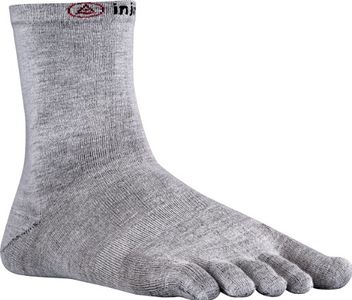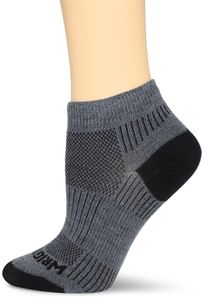Injinji
Injinji socks can be useful in preventing certain types of blisters. The unique feature of Injinji socks is they have a separate compartment for each toe, and are sometimes called "toe socks." This feature can help reduce blisters between the toes, but ironically the extra thickness of material between each toe can actually increase pressure on the toes and makes things worse. If the blisters between the toes are caused by a tight toe box, then get shoes with more room for your toes or cut open the toe box. If you have lots of room in your toe box and still have blisters between your toes, then use the thinnest of the Injinji socks, the Injinji liner sock. Remember that other than the individual toe compartments, the Injinji is a regular single-layer synthetic sock, so it won't help with blisters in other areas. The key is to combine the Injinji liner sock with another thin sock so that you have two layers of material, which helps prevent blisters in other areas. I've found that the ultimate protection comes from combining the Injinji liner with a Wrightsock sock. The Wrightsock socks are made of two layers, so when combined with the Injinji you have three layers. When your shoe moves, these layers slide over each other, which reduces friction on your skin. The Wrightsock Coolmesh socks are remarkably thin, or you can use the slightly thicker Wrightsock Silver Elite. I use both the Coolmesh and of the Silver Elite, which allows me to tweak the fit of any particular shoe slightly, another critical aspect of Blister Prevention.


